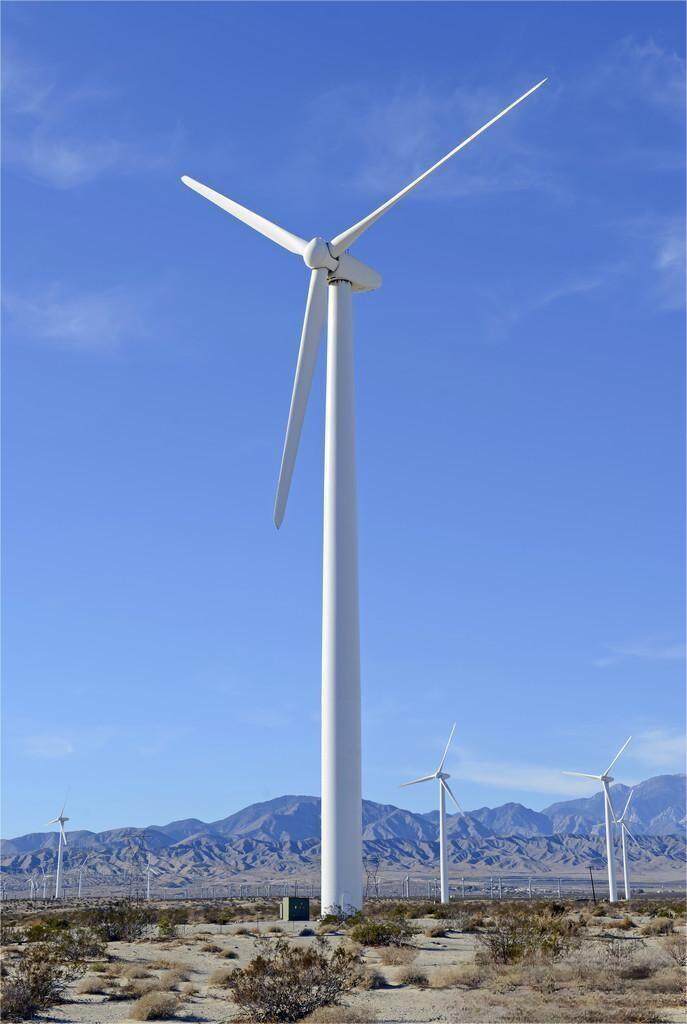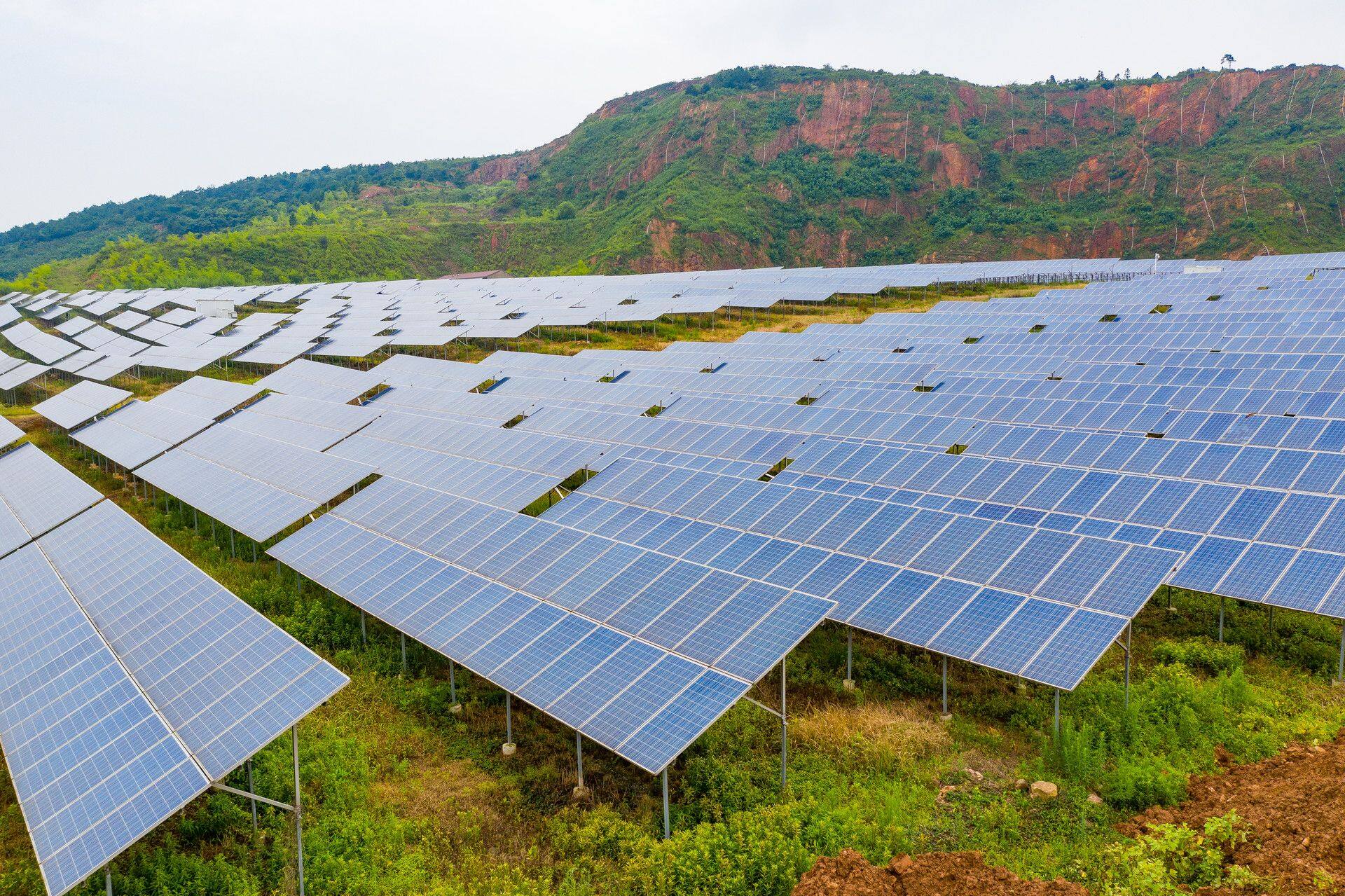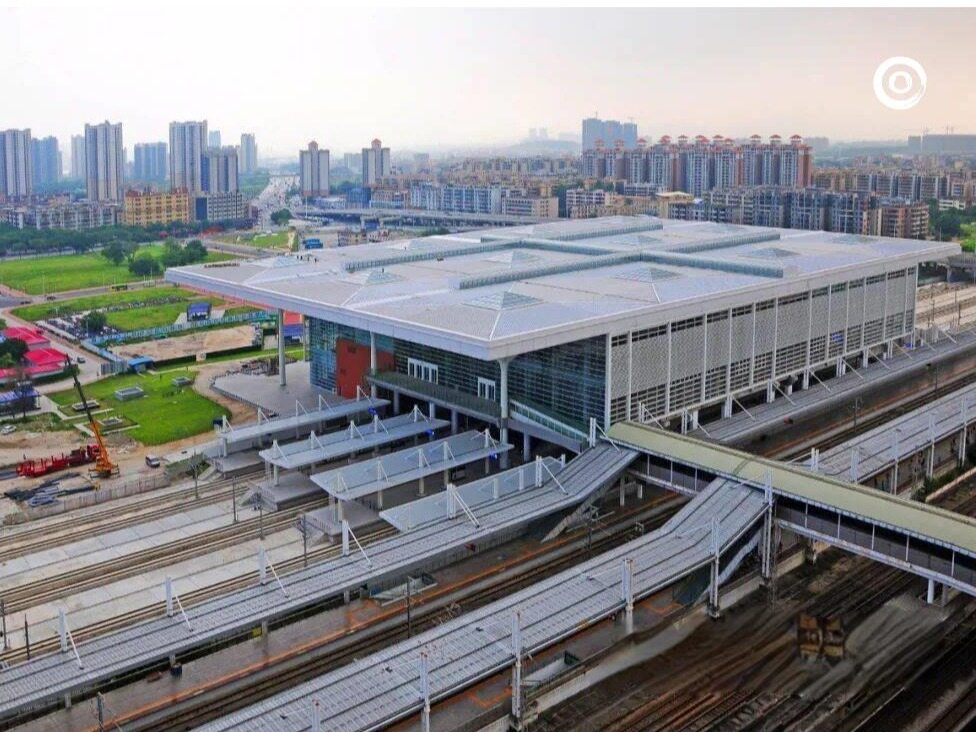- Wind turbines and photovoltaic modules will face centralized retirement, followed by the problem of mass disposal of key components
- China is a major country in the manufacturing and application of photovoltaic modules, with module production accounting for over three-quarters of the world's total
In recent years, China's new energy development represented by wind and photovoltaic power generation has achieved significant results, with the installed capacity ranking first globally, the proportion of power generation steadily increasing, and costs rapidly decreasing. However, the trend of centralized retirement of wind power and photovoltaic equipment in China is approaching, and how to achieve the recycling and reuse of these resources has become one of the urgent problems that the new energy industry needs to solve.
In May 2022, the General Office of the State Council forwarded an implementation plan drafted by the National Development and Reform Commission and the National Energy Administration to promote high-quality development of new energy in the new era. The Implementation Plan aims to achieve a total installed capacity of over 1.2 billion kilowatts of wind and solar power in China by 2030, focusing on policy bottlenecks, pain points, and gaps that affect the large-scale and high proportion development of new energy, and proposing practical and operational policy measures. Afterwards, the National Energy Administration organized the preparation of case interpretation materials, elaborating in detail on the background, objectives, measures already in place, and the direction of policy implementation for each policy point.

The interpretation of the aforementioned case states that as China enters the 14th Five Year Plan, wind turbines and photovoltaic modules will gradually undergo centralized retirement, leading to the problem of mass disposal of key components. Taking photovoltaic as an example, China is a major country in the manufacturing and application of photovoltaic modules, with module production accounting for more than three-quarters of the world. In terms of application, the newly added and accumulated installed capacity have maintained the world's top position for many consecutive years. As of the end of 2021, the cumulative installed capacity of China's photovoltaic system has reached 306 million kilowatts. If calculated based on each photovoltaic module with a capacity of 300 watts, a volume of 0.066 cubic meters, and a weight of 19 kilograms, even if only considering the existing installed capacity in China, when all photovoltaic power stations have completed their 25 year operation, the discarded photovoltaic modules will generate about 67 million cubic meters and about 20 million tons of solid waste.
If this part of solid waste is not treated in a timely and appropriate manner, it is obviously not conducive to the long-term healthy development of the industry. In this regard, the upstream and downstream of the industrial chain have been actively exploring and have initially formed some technological routes. However, due to the small market size, low recycling and comprehensive utilization value, and low investment enthusiasm of enterprises, this type of technology has not yet been industrialized. In addition, policies and standards related to component recycling also need to be improved.
The issue of recycling and utilization of wind turbines and photovoltaic modules has received increasing attention. In October 2021, the State Council issued the "Action Plan for Carbon Peak before 2030", which clearly requires promoting the recycling of waste from emerging industries such as retired power batteries, photovoltaic modules, and wind turbine blades. In January 2022, eight departments including the Ministry of Industry and Information Technology jointly issued the "Implementation Plan for Accelerating the Comprehensive Utilization of Industrial Resources", proposing to promote the research and development and industrial application of emerging solid waste comprehensive utilization technologies such as waste photovoltaic modules and wind turbine blades, increase the research and development and promotion of comprehensive utilization technology equipment, and explore the route of emerging solid waste comprehensive utilization technology. In January 2023, six departments including the Ministry of Industry and Information Technology issued the "Guiding Opinions on Promoting the Development of the Energy Electronics Industry", further requiring the acceleration of the construction of a photovoltaic supply chain traceability system, emphasizing the promotion of the research and development and industrial application of photovoltaic module recycling technology.

The next step is to focus on the following tasks:
One is to accelerate the formulation of policies and standards. Improve industry standards, technical specifications, certification systems, etc. as soon as possible, establish a reasonable business model, gradually introduce green certification for comprehensive utilization products, research and provide tax policy incentives or national budget funding support for the construction of industrial production lines;
The second is to improve the recycling and disposal methods for wind turbines and photovoltaic modules. On the basis of widely soliciting opinions and suggestions from production enterprises, research institutes, and recycling and environmental protection institutions, formulate solid waste treatment standards for wind turbines and photovoltaic modules, evaluation criteria for composite material solid waste disposal enterprises, and cross regional disposal methods, and carry out targeted project demonstrations. At the same time, establish a cross industry cooperation and exchange mechanism to encourage other industries to participate in the application demonstration of wind turbine and photovoltaic module recycling technology, and give policy preferences to projects and enterprises that use recycled products. Establish requirements for recycled products, relax product standards and indicators, and limit appropriate usage conditions and scenarios for market selection;
The third is to carry out research on the recycling and reuse technology of wind turbines and photovoltaic modules. Optimize the technology of resource recycling and reuse, with a focus on solving the technical route of recycling and reuse methods, equipment industrialization, and large-scale application of post materials. Guide research institutions, universities, and solid waste recycling enterprises to develop more efficient and environmentally friendly recycling and disposal processes, and expand application scenarios. Encourage equipment manufacturing enterprises to improve the recycling and reuse system, and cultivate a complete industrial chain for the manufacturing, use, and recycling of wind turbines and photovoltaic modules.
The fourth is to strengthen the research and development of new materials, implement technological transformation, and extend the service life of wind turbines and photovoltaic modules.
The retirement of wind turbines and photovoltaic modules will create a new blue ocean.
Taking the photovoltaic industry as an example, according to relevant data, the proportion of glass, aluminum and semiconductor materials in crystalline silicon photovoltaic modules can reach 92%, in addition, it also contains about 1% of silver and other precious metals. If fully recovered, by 2030, 1.45 million tons of carbon steel, 1.1 million tons of glass, 540000 tons of plastic, 260000 tons of aluminum, 170000 tons of copper, 50000 tons of silicon, and 550 tons of silver can be obtained from discarded photovoltaic modules. The rare and precious metals such as tellurium, indium, and gallium contained in thin film photovoltaic modules mainly rely on foreign imports. Therefore, its efficient recycling and utilization not only has huge economic benefits, but also helps to reduce the import dependence of related resources and prevent the risk of raw material supply. Editor/Zhao E
Comment
 Praise
Praise
 Collect
Collect
 Comment
Comment
 Search
Search














Write something~